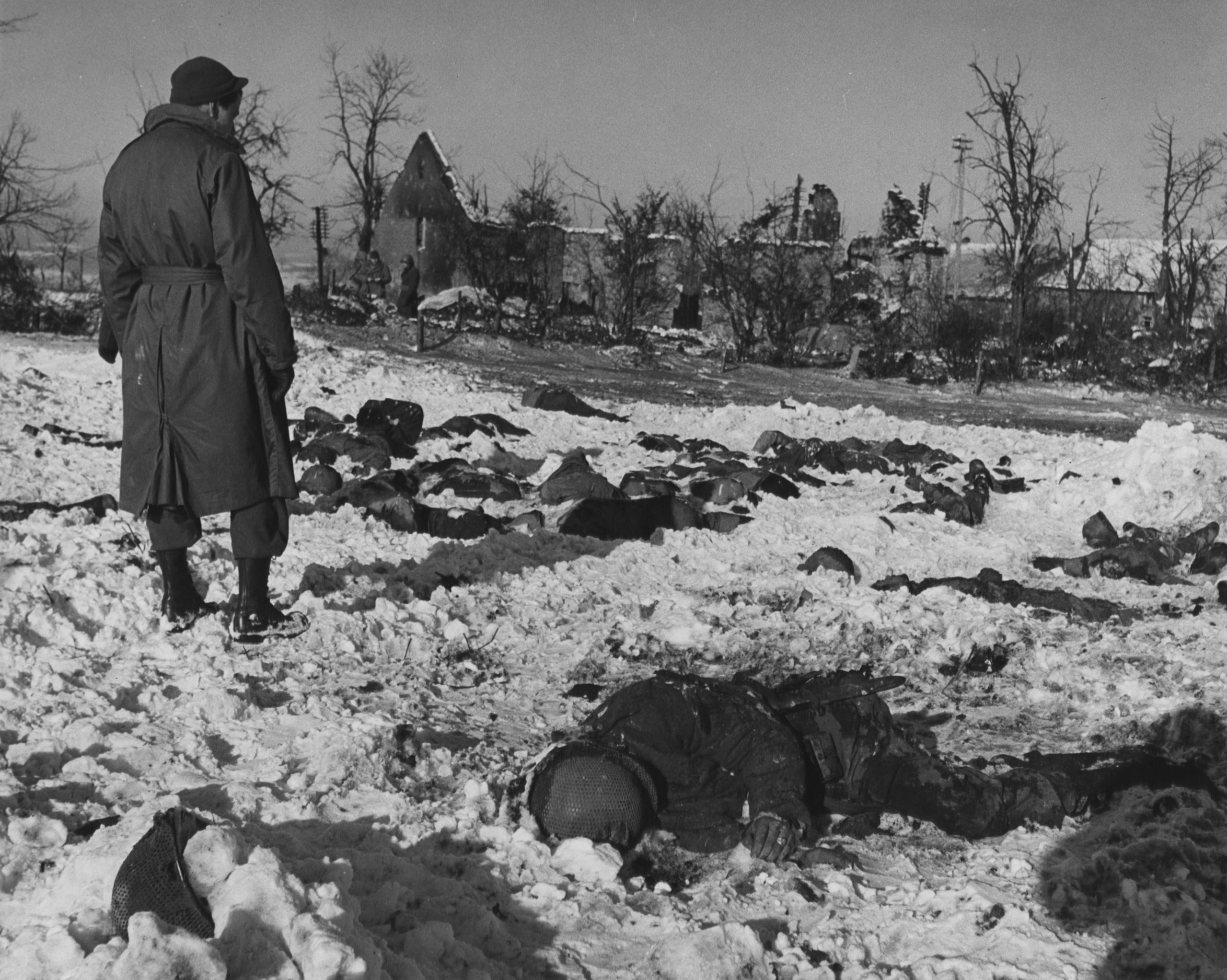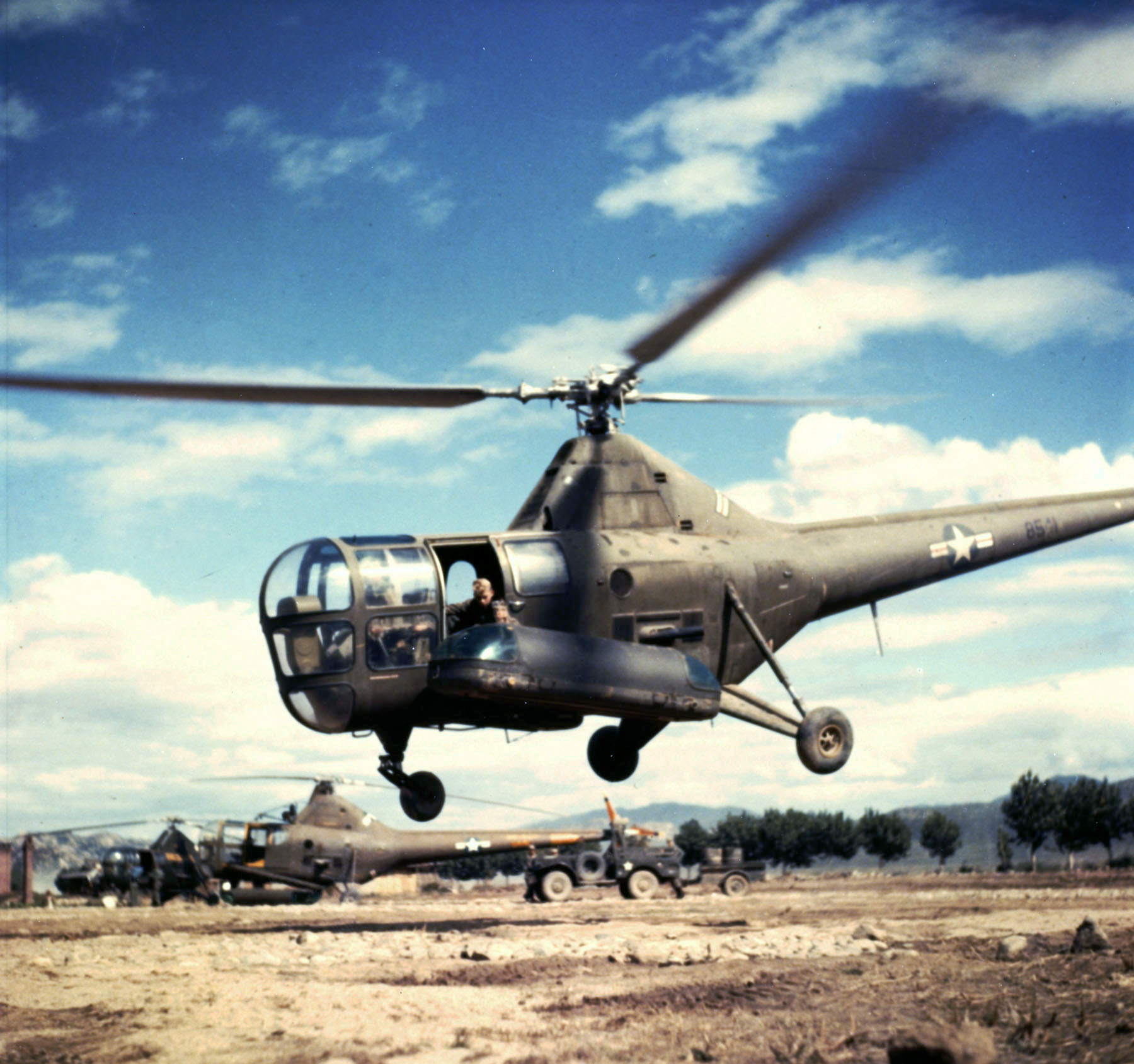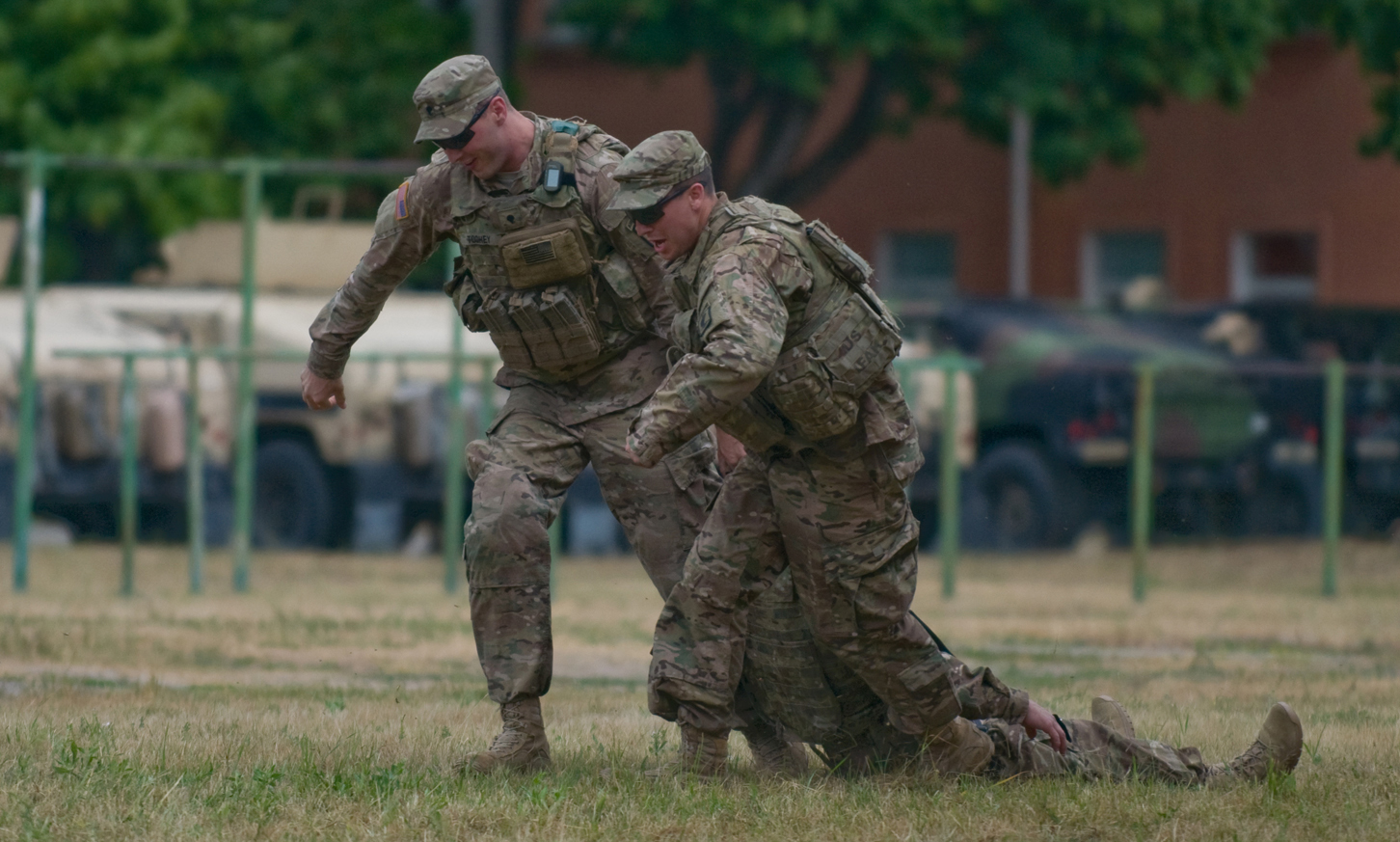|
Casualty Evacuation
Casualty evacuation, also known as CASEVAC or by the callsign Dustoff or colloquially Dust Off, is a military term for the emergency patient evacuation of casualty (person), casualties from a combat zone. Casevac can be done by both ground and air. "DUSTOFF" is the callsign specific to U.S. Army Air Ambulance units. CASEVACs by air today are almost exclusively done by helicopter, a practice begun on a small scale toward the end of World War II; before that, STOL aircraft, such as the Fieseler Fi 156 or Piper J-3 were used. The primary difference between a CASEVAC and a medical evacuation (MEDEVAC) is that a MEDEVAC uses a standardized and dedicated vehicle providing en route care, while a CASEVAC uses non-standardized and non-dedicated vehicles that may or may not provide en route care. CASEVACs are commonly referred to as "a lift/flight of opportunity". If a corpsman/medic on the ground calls for a CASEVAC, the closest available unit with space could be called to assist, reg ... [...More Info...] [...Related Items...] OR: [Wikipedia] [Google] [Baidu] |
Marine CASEVAC Fallujah
Marine is an adjective meaning of or pertaining to the sea or ocean. Marine or marines may refer to: Ocean * Maritime (other) * Marine art * Marine biology * Marine current power * Marine debris * Marine energy * Marine habitats * Marine life * Marine pollution Military * Marines, a naval-based infantry force ** United States Marine Corps ** Royal Marines of the UK ** Brazilian Marine Corps ** Spanish Marine Infantry ** Fusiliers marins (France) ** Indonesian Marine Corps ** Republic of China Marine Corps ** Republic of Korea Marine Corps ** Royal Thai Marine Corps *"Marine" also means "navy" in several languages: ** Austro-Hungarian Navy () ** Belgian Navy (, , ) ** Royal Canadian Navy () *** Provincial Marine (1796–1910), a predecessor to the Royal Canadian Navy ** Navy of the Democratic Republic of the Congo () ** Royal Danish Navy () ** Finnish Navy (, ) ** French Navy () ** Gabonese Navy () ** German Navy () ** Royal Moroccan Navy () ** R ... [...More Info...] [...Related Items...] OR: [Wikipedia] [Google] [Baidu] |
War Crime
A war crime is a violation of the laws of war that gives rise to individual criminal responsibility for actions by combatants in action, such as intentionally killing civilians or intentionally killing prisoners of war, torture, taking hostages, unnecessarily destroying civilian property, deception by perfidy, wartime sexual violence, pillaging, and for any individual that is part of the command structure who orders any attempt to committing mass killings (including genocide or ethnic cleansing), the granting of no quarter despite surrender, the conscription of children in the military, and flouting the legal Indiscriminate attack, distinctions of Proportionality (law), proportionality and military necessity. The formal concept of war crimes emerged from the codification of the customary international law that applied to warfare between sovereign states, such as the Lieber Code (1863) of the Union Army in the American Civil War and the Hague Conventions of 1899 and 1907 for int ... [...More Info...] [...Related Items...] OR: [Wikipedia] [Google] [Baidu] |
Emergency Medical Services
Emergency medical services (EMS), also known as ambulance services, pre-hospital care or paramedic services, are emergency services that provide urgent pre-hospital treatment and stabilisation for serious illness and injuries and transport to definitive care. They may also be known as a first aid squad, FAST squad, emergency squad, ambulance squad, ambulance corps, life squad or by other acronym, initialisms such as EMAS or EMARS. In most places, EMS can be summoned by members of the public (as well as medical facilities, other emergency services, businesses and authorities) via an emergency telephone number (such as 911 in the United States) which puts them in contact with a dispatching centre, which will then dispatch suitable resources for the call. Ambulances are the primary vehicles for delivering EMS, though Nontransporting EMS vehicle, squad cars, Motorcycle ambulance, motorcycles, Air medical services, aircraft, Water ambulance, boats, Firefighting apparatus, fire appara ... [...More Info...] [...Related Items...] OR: [Wikipedia] [Google] [Baidu] |
Battlefield Medicine
Battlefield medicine, also called field surgery and later combat casualty care, is the treatment of wounded combatants and non-combatants in or near an area of combat. Medicine, Civilian medicine has been greatly advanced by procedures that were first developed to treat the wounds inflicted during combat. With the advent of advanced procedures and medical technology, even polytrauma can be survivable in modern wars. Battlefield medicine is a category of military medicine. History Antiquity * During Alexander the Great's military campaigns in the 4th century BC, tourniquets were used to stanch the bleeding of wounded soldiers. Ancient Rome, Romans used them to control bleeding, especially during amputations. These tourniquets were narrow straps made of bronze, using leather only for comfort. * According to bamboo slips from the Han dynasty, external injury from combat and Intragroup conflict, infighting comprised the plurality of injuries and illnesses from soldiers on the front ... [...More Info...] [...Related Items...] OR: [Wikipedia] [Google] [Baidu] |
Medical Evacuation
Medical evacuation, often shortened to medevac or medivac, is the timely and efficient movement and en route care provided by medical personnel to patients requiring evacuation or transport using medically equipped air ambulances, helicopters and other means of emergency transport including ground ambulance and maritime transfers. Examples include civilian Emergency medical services, EMS vehicles, civilian aeromedical helicopter services, and military air ambulances. This term also covers the transfer of patients from the battlefield to a treatment facility or from one treatment facility to another by medical personnel, such as from a local hospital to another medical facility which has adequate medical equipment. In Asia, according to Aeromedical Global (M) Sdn Bhd, medical evacuations via air ambulance can be performed via a single or dual stretched setup. According to patients medical condition, Emergency Air Ambulances will be equipped with relevant equipment (ventilators, ... [...More Info...] [...Related Items...] OR: [Wikipedia] [Google] [Baidu] |
Air Ambulance
Air medical services are the use of aircraft, including both fixed-wing aircraft and helicopters to provide various kinds of urgent medical care, especially prehospital, emergency and critical care to patients during aeromedical evacuation and rescue operations. History During World War I, air transport was used to provide medical evacuation – either from frontline areas or the battlefield itself. In 1928, in Australia, John Flynn founded the Flying Doctor Service (later the Royal Flying Doctor Service), to provide a wide range of medical services to civilians in remote areas; these included from routine consultations with travelling general practitioners, to air ambulance evacuations and other emergency medical services. Fixed wing military air ambulances came into regular use during World War II. Helicopters became more commonly used for such purposes during the Korean and Vietnam wars. Later, helicopters were introduced to civilian health care, especially for sho ... [...More Info...] [...Related Items...] OR: [Wikipedia] [Google] [Baidu] |
Aeromedical Evacuation
Aeromedical evacuation (AE) is the use of military transport aircraft to carry wounded personnel. The first recorded British ambulance flight took place in 1917 in the Sinai Peninsula some 30 miles south of El Arish when a Royal Aircraft Factory B.E.2c flew out a soldier in the Imperial Camel Corps who had been shot in the ankle during the raid on Bir el Hassana. The flight took 45 minutes; the same journey by land would have taken some 3 days. In the 1920s several aeromedical services, both official and unofficial, started up in various parts of the world. Aircraft were still primitive at the time, with limited capabilities, and the efforts received mixed reviews. Development of the idea continued. France and the United Kingdom used fully organized aeromedical evacuation services during the African and Middle Eastern colonial wars of the 1920s. In 1920, the British, while suppressing the " Mad Mullah" in Somaliland, used an Airco DH.9A fitted out as an air ambulance ... [...More Info...] [...Related Items...] OR: [Wikipedia] [Google] [Baidu] |
Tactical Combat Casualty Care
Tactical Combat Casualty Care (TCCC or TC3), formerly known as Self Aid Buddy Care, is a set of guidelines for Major trauma, trauma life support in Battlefield medicine, prehospital combat medicine published by the Defense Health Agency, United States Defense Health Agency. They are designed to reduce preventable deaths while maintaining operational success. The TCCC guidelines are routinely updated and published by the Committee on Tactical Combat Casualty Care (CoTCCC), which is part of the Defense Committees on Trauma (DCoT) division of the Defense Health Agency (DHA). TCCC was designed in the 1990s for the United States Special Operations Command, Special Operations Command medical community. Originally a joint United States Naval Special Warfare Command, Naval Special Warfare Command and Special Operations Medical Research & Development initiative, CoTCCC developed combat-appropriate and evidence-based trauma care based on injury patterns of previous conflicts. The original TCC ... [...More Info...] [...Related Items...] OR: [Wikipedia] [Google] [Baidu] |
QuikClot
QuikClot is a brand of wound dressings that contain kaolinite, kaolin, a antihemorrhagic, hemostatic agent. The brand is owned by Teleflex. It is primarily used by Tactical emergency medical services, militaries, surgeon, surgeons, Emergency Medical Services, EMS, and first responding civilians to stop Bleeding, traumatic hemorrhage. History The use of a sterilized molecular sieve material, such as zeolite, in a binding material to treat wounds was patented by Frank Hursey in 1989. Following the September 11 attacks, the US armed forces conducted a study comparing different antihemorrhagic technologies, in which QuikClot received the best score. Another study found that when used to treat lethal groin injuries in swine, the treated animals had a 100% survival rate. Following these tests, the US armed forces approved its use in Afghanistan and Iraq. Zeolite The original formulation of the product contained the active ingredient zeolite, which promoted blood clotting. The zeolit ... [...More Info...] [...Related Items...] OR: [Wikipedia] [Google] [Baidu] |
Tourniquet
A tourniquet is a device that is used to apply pressure to a limb or extremity in order to create ischemia or stopping the flow of blood. It may be used in emergencies, in surgery, or in post-operative rehabilitation. A simple tourniquet can be made from a stick and a rope, but the use of makeshift tourniquets has been reduced over time due to their ineffectiveness compared to a commercial and professional tourniquet. This may stem the flow of blood, but side effects such as soft tissue damage and nerve damage may occur. History During Alexander the Great’s military campaigns in the fourth century BC, tourniquets were used to stanch the bleeding of wounded soldiers. Romans used them to control bleeding, especially during amputations. These tourniquets were narrow straps made of bronze, using only leather for comfort. In 1718, French surgeon Jean Louis Petit developed a screw device for occluding blood flow in surgical sites. Before this invention, the ''tourniquet' ... [...More Info...] [...Related Items...] OR: [Wikipedia] [Google] [Baidu] |
Charles L
Charles is a masculine given name predominantly found in English language, English and French language, French speaking countries. It is from the French form ''Charles'' of the Proto-Germanic, Proto-Germanic name (in runic alphabet) or ''*karilaz'' (in Latin alphabet), whose meaning was "free man". The Old English descendant of this word was ''Churl, Ċearl'' or ''Ċeorl'', as the name of King Cearl of Mercia, that disappeared after the Norman conquest of England. The name was notably borne by Charlemagne (Charles the Great), and was at the time Latinisation of names, Latinized as ''Karolus'' (as in ''Vita Karoli Magni''), later also as ''Carolus (other), Carolus''. Etymology The name's etymology is a Common Germanic noun ''*karilaz'' meaning "free man", which survives in English as wikt:churl, churl (< Old English ''ċeorl''), which developed its deprecating sense in the Middle English period. Some Germanic languages, for example Dutch language, Dutch and German ... [...More Info...] [...Related Items...] OR: [Wikipedia] [Google] [Baidu] |
Peter Arnett
Peter Gregg Arnett (born 13 November 1934) is a New Zealand-born American journalist. He is known for his coverage of the Vietnam War and the Gulf War. He was awarded the 1966 Pulitzer Prize in International Reporting for his work in Vietnam from 1962 to 1965, mostly reporting for the Associated Press. Arnett also worked for ''National Geographic'' magazine, and later for various television networks, most notably for nearly two decades at CNN. Arnett published a memoir, ''Live from the Battlefield: From Vietnam to Baghdad, 35 Years in the World's War Zones'' (1994). In March 1997, Arnett interviewed Osama bin Laden, leader of Al-Qaeda. The journalism school at the Southern Institute of Technology in New Zealand was named for Arnett. Early life Arnett was born in 1934 in Riverton, in New Zealand's Southland region. His first job as a journalist was with '' The Southland Times''. Vietnam During his early years in journalism, Arnett worked in Southeast Asia, largely based i ... [...More Info...] [...Related Items...] OR: [Wikipedia] [Google] [Baidu] |









